The Cutthroat Truffle Industry

By B. Alexandra Szerlip
Contributor
5/3/2020
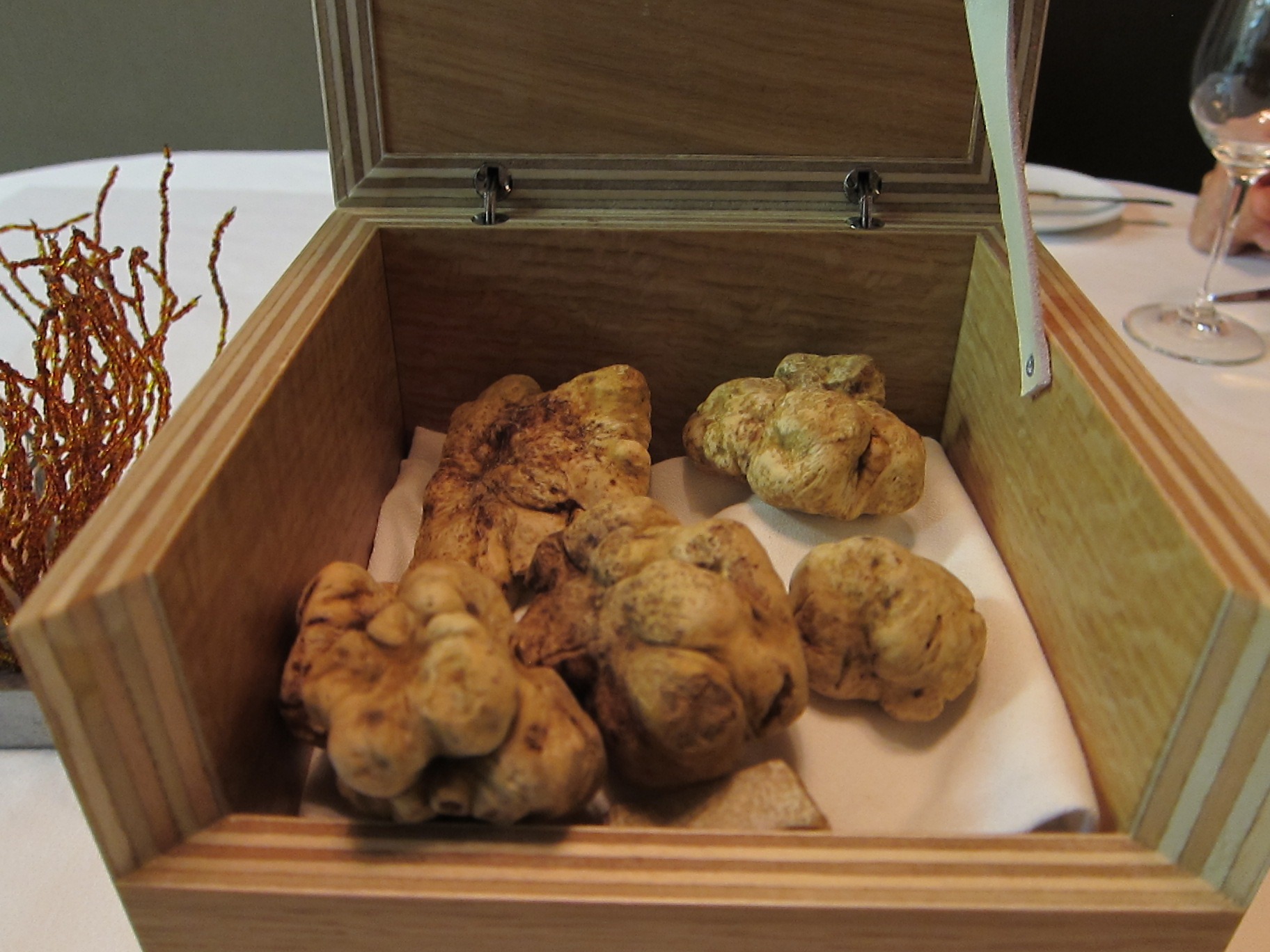
Picture Credit: Eugene Kim
Khufu, the pharaoh responsible for the Great Pyramids at Giza, insisted that the royal table always be stocked with them. The ancient Greeks thought they were the result of thunderbolts striking the ground. 14th-century poet Petrarch devoted a sonnet to them; 18th-century French food critic Brillat-Savarin dubbed them “the very diamond of gastronomy.” “I have wept three times in my life,” admitted Barber of Seville composer Gioachino Rossini. “Once when my first opera failed. Once again, the first time I heard Paganini play the violin. And once when a truffled turkey fell overboard at a boating picnic.”
Scientists posit that truffles have existed for at least 360 million years, a gift the soil provides without prodding from latecomer humans. Ounce for ounce, these bulbous fungi are the most expensive food in the world.
Historically, they were only available in the wild, their harvests laborious, their elusive growing sites (underground, often beneath rough terrain) highly guarded secrets. They’re still found that way (one Italian truffle company reputedly uses a network of 18,000 hunters, as they’re called, to supply its customers), but thanks to laboratory breakthroughs that’s changing — a change destined to significantly impact what’s already a billion-dollar industry.
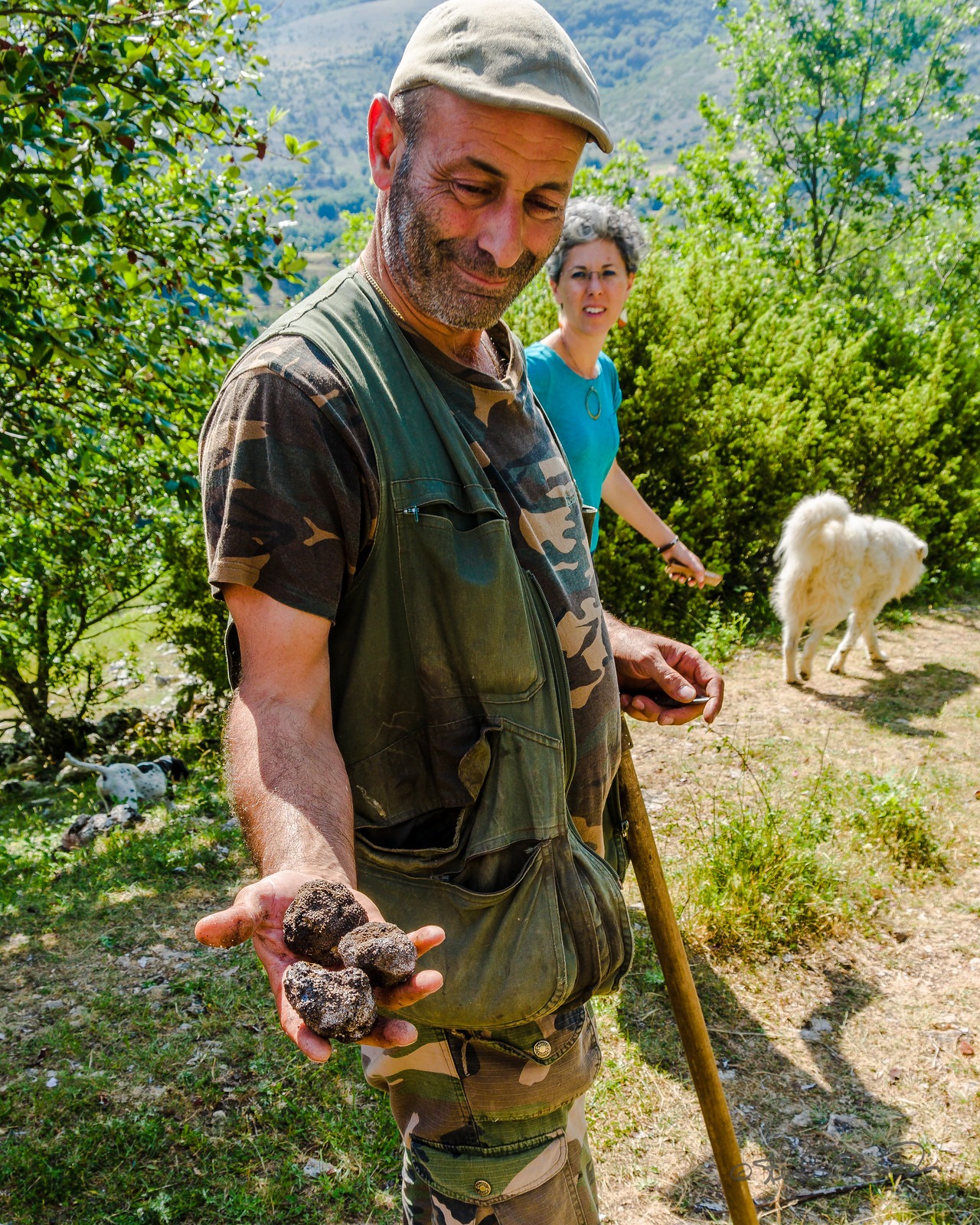
Truffle hunter (Picture Credit: Steven dosRemedios)
***
There’s a natural symbiosis between trees (typically oaks and hazelnuts) and root-colonizing truffle fungi. It’s a complex relationship, the details of which remain somewhat mysterious; digging up a truffle destroys its habitat, making scientific analysis impossible. But simply put: the fungus works as an extension of the tree’s root system, helping it absorb water and nutrients. In exchange, it’s supplied with starches and sugars for growth. “Mycorrhizal fungi and mycorrhizal trees never live without each other,” noted Dr Charles Lefevre, one of the trailblazers behind a relatively recent inoculation technology.
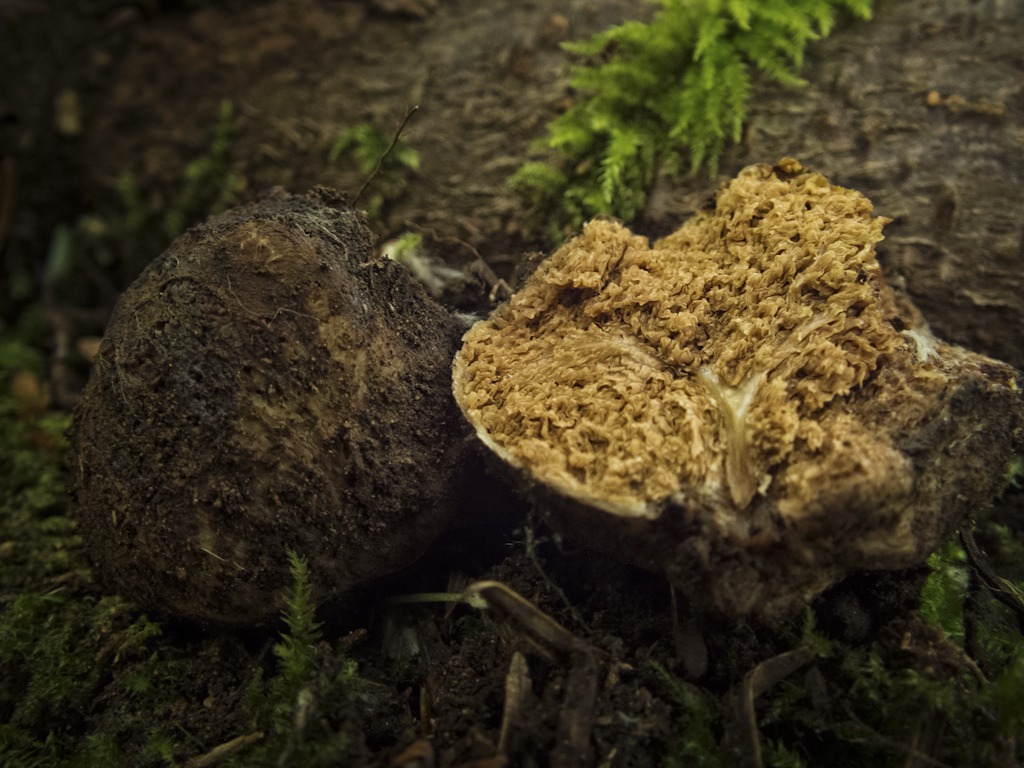
Picture Credit: Scott Darbey
Lefevre’s career was circuitous. After two years operating nuclear reactors to create radioactive materials for medical research, he spent another three working with telescopes, researching black holes and white dwarves. He also spent time labeling mushroom toxins, snake venom, and other organic compounds with fluorescent dyes for biomedical research.
As a graduate student in mycology at Oregon State University in the mid-1990s, he focused on matsutake mushrooms, another exorbitantly expensive and nearly-impossible-to-cultivate fungus that famously grows beneath Japan’s red pines, though the vast majority are harvested in China’s Yunnan province. Matsutake connoisseurs speak of truffles as having “the subtlety of a freight train” in comparison. As luck would have it, Oregon is home to several edible varieties of freight train; Lefevre supplemented his living expenses by foraging for them. Within a few years, he’d discovered that his “fallback” fungus was adaptable to a broader range of soil conditions than previously thought, which led him to begin experimenting with introducing truffle spores directly into the tree roots.
The goal was to get the spores happily ensconced in planted orchards, in lieu of the far more complex ecosystems of old-growth forests. Attempts had been made in the past with limited success. Lefevre was the right guy at the right time. Before long, farmers began approaching him with spore inoculation requests. Like caviar, another luxury comestible, truffles are now being farmed. As of 2019, Lefevre had 22 successfully producing customers as far afield as California, Oregon, Washington, Idaho, and North Carolina; 10 of them harvested their first truffles within the last two years.
Lefevre is currently working with nine species of truffle that colonize oak, Douglas fir, hazelnut, and pecan trees. It is, he insists, “the birth of an industry…no longer a pipe dream.” Another Oregon-based company, American Truffle Company, founded by a mycologist and a former tech executive, supplies real-time data on climate, soil, and irrigation to truffle orchards in 20 countries, including Italy, Spain, and France (all traditional truffle breeding grounds) and as far afield as South Africa, Chile, Argentina, New Zealand, and Australia. In Japan, where 20 indigenous truffle varieties have been found, most recently in Tochigi, Okayama, and Oita prefectures, cultivation plans are being considered.
That said, farming truffles remains an expensive gamble that requires patience and a certain amount of blind faith. It can take from five years to more than a decade after a seedling is planted for truffles to develop – or not. Soil, by its very nature, teems with biodiversity, much of which still isn’t fully understood; the wrong kind of soil, or competing fungi hiding away in it, can spell disaster.
***
There are hundreds of truffle species, but only a handful are of culinary significance. North America alone is home to some 90 varieties, rated on a descending scale from 1) delicious, 2) tasty, and 3) palatable), to 4) insipid, and 5) inedible or poisonous. Looks can be deceiving; in some cases, the difference between species is microscopic.
Northern California – in particular Napa and Sonoma counties, famous for their vineyards – is proving to be fertile ground.
In 2016, Staci O’Toole, a former Silicon Valley health insurance executive, purchased an orchard in the Sierra foothills, two hours northeast of San Francisco, which had been planted with LeFevre-inoculated seedlings 15 years before. The orchard’s original owners had lost interest; the land was, as O’Toole put it, “in rehab mode.”
After two years of applying the latest scientific research, O’Toole harvested her first Black Winter Périgords (Tuber melanosporum), the second-most commercially valuable species in the world. By 2019, O’Toole’s harvest had grown to four pounds.
“Bay Area restaurants are gonna love having truffles that were in the ground this morning and on the plate this evening,” notes Fran Angerer, owner of a nearby Geyserville orchard. Shelf life is a huge factor. Truffles are best consumed within a week of being dug up, which can be problematic when they’re shipped long distances. Devotees insist that every minute a truffle is out of the ground diminishes its flavor.
Truffles are best consumed within a week of being dug up.
Angerer is convinced it’s only a matter of time before his investment will “hit,” that cultivated truffles will eventually surpass in-the-wild yields which, in Europe, have been falling steadily — from an annual haul of 2,000 tons 100 years ago to just 30 tons in 2012 — the result of everything from the ravages of two world wars, old oak forests being converted to grazing land, industrial farming, the demise of rural village life, urbanization, increased pollution and, most recently, climate change.
The global truffle market is expected to grow to over $6 billion within 10 years.
“You start off real slow,” Angerer explained, “and once it starts, boom, it goes through the roof.”
Sharing in that optimism, several Northern California wineries are now diversifying their crop, planting truffle trees alongside cabernet vines. In a few cases — pinot noir grapes can generate $18,000 an acre versus $63,000 an acre for established truffle trees — they’re switching crops entirely.
Still, reliable, predictable harvests remain a question mark. “There’s really no way to speculate with underground crops,” O’Toole admits. “We aren’t exactly sure what the season is,” plus “crazy weather” doesn’t help. (Truffles like warm summers, preferably with thunderstorms; both California and Europe are experiencing intensifying droughts and hotter, drier summers which, along with hard winter frosts, are ruinous.) East Coast truffieres also have hazelnut tree blight to contend with. California truffieres battle truffle-munching gophers, and root-crunching squirrels.
Other truffle-loving quadrupeds include chipmunks, rabbits, grizzly bears (not a local threat, as the last California grizzly was killed in 1922), and female pigs. The latter, with their furrowing ability and excellent sense of smell, were traditional truffiere aide-de-camps as far back as Roman times, helping to seek out buried treasure which, it turns out, contains androstenol, a hormone found in the saliva of sexually aroused boars. Porcine pheromones. Come and get it, ladies. (Since the mid-1990s, there’s been some controversy as to the come-hither primacy of androstenol in truffles. One study gives cabbage-smelling dimethyl sulfide the credit. Either way, androstenol — also found in the armpits of human males — is part of the truffle cocktail; smelling it activates the hypothalamus in both quadruped and biped brains, which brings about pheromone-triggered mating behavior. Asked to describe the smell of truffles in one word, the most common human response is “sex.”)
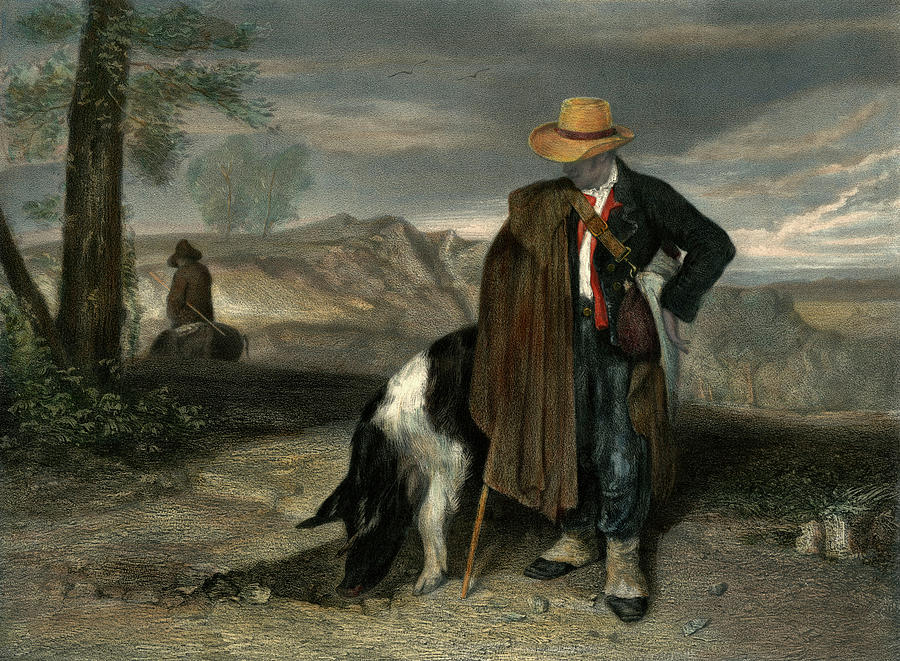
Truffle hunting, with pig
But wrestling a 300-pound sow, who has no interest in a proffered substitute turnip, has been known to result in the loss of fingers. And sows do a lot of damage to the terrain, compromising future crops. Plus, transporting, not to mention walking about with them, makes it difficult to keep favorite truffle spots secret from rivals. In France, where the truffle harvest is referred to as “la grande mystique,” knowledge of favorite spots, and the art of sustainably unearthing them, one by one, has been passed down from father to son for generations, a sacred trust. Many truffliers died in the trenches of both WWI and WWII, taking their secrets with them.
At some point, pigs were replaced with dogs — far more loyal and efficient, easier to transport, and unlikely to chew off fingers. Canines don’t come to the hunt naturally. Training methods vary. The long, expensive Italian method begins with truffle oil being placed on a mother’s teats to imprint the scent on nursing puppies, followed by playing “catch” with truffle-scented socks, eventually followed by more formal methods, which can include law enforcement techniques for sniffing out bombs and narcotics. Some breeds are more responsive than others. Lagotto Romagnolos – relatively rare, highly intelligent, good natured, tenacious, with strong constitutions and thick, non-shedding curly coats to insulate them against the cold — are a particular favorite. Like some of the world’s finest truffles of centuries past, Romagnolos are, as their name suggests, native to Italy.
Comedian Conan O’Brien truffle hunting with dogs
Like LeFevre, O’Toole semi-stumbled into her new vocation. She’d been in the market for a dog along with the possibility of a career change, preferably one that required being out of doors. The acquisition of an adorable Romagnolo puppy named Mila led to an unanticipated passion project for both canine and owner. She has since established her own truffle hound training school.
***
Declining European harvests and the commensurate rise in prices, exacerbated by the secrecy intrinsic to the truffle biz, has engendered cloak-and-dagger antics worthy of a John Le Carre novel — everything from deception and skullduggery to the kidnapping of prize truffle dogs, who are sometimes returned once the harvest season ends. In a few cases, they’ve been poisoned by rival foragers.
Third-generation French truffle farmer Michel Tournayre has spoken publicly of fellow truffieres being “car-jacked, beaten with baseball bats, even killed.” Dealers have been followed home and robbed (of both cash and truffles) at gunpoint. Driving a stolen bulldozer, a gang of thugs crashed though the front gate of a leading supplier in Provence and emptied the warehouse. A renowned truffle connoisseur and chef known simply as Bruno has compared the traffic in truffles to a tax-free, Mafia-like drug trade. “Behind their popularity lies a dangerous world.” His Provencal restaurant, Chez Bruno, where wealthy folk helicopter in from Paris and Monaco just to enjoy a meal, has also been visited by thieves who’ve managed to steal hundreds of pounds of tubers from his kitchen. The loot probably ended up being sold in public markets out of the backs of trucks.
The traffic in truffles has been compared to a tax-free, Mafia-like drug trade.
Since the 1980s, both poachers (who roam the fields under cover of darkness) and thieves (who prefer to wait until others have done the harvesting) have become increasingly organized and sophisticated, what Ryan Philips, author of The Truffle Underground, describes as “a paramilitary ballet.” Many in the trade have been forced to invest in expensive security measures, and farmers are careful not to broadcast their yields. Shipments en route between countries have been known to vanish without a trace, with customs officials not above suspicion.
***
But more than theft, dog-nappings, and climate change, the top worry of many in the trade is China.
Asiatic truffles, known collectively as Chinese truffles — once considered food for pigs, occasionally used in rural tonics — are marketed worldwide as the real thing. Harvested with a small adz, without the help of dogs (who find them only when they’re ripe), truffles are indiscriminately raked up, often immature and tasteless, then sold mixed in with commercial-quality French or Italian ones, a practice that’s been compared to cutting cocaine with baby powder. Every year since the early 1990s, food importers and middle-men have imported tons of Chinese truffles into Europe to supplement less-than-optimal harvests and meet demand. During the 1994-1995 season, France officially produced 13.5 tons of Perigords but imported 23.2 tons of Chinese Perigord-look-alikes.
Regrettably, note the authors of Taming the Truffle, “the Chinese can earn more in a day collecting than they can in a month at a regular job.” The damage, to both the product’s market value and its soil beds “seems unlikely to stop.”
***
Greed and chicanery exist at very level of the supply chain. Other tricks of the trade include staining inferior truffles with walnut juice to darken them (voila! a 500% markup), inserting slivers of lead shot or gravel to increase their weight, cobbling several small ones together with hidden toothpicks and covering them with dirt, boiling them to extend their physical lifespan (which completely destroys their odor), and freezing old ones to make them firmer.
Italy has made the import of Chinese truffles illegal. Regulations being easier to make than enforce, the country has gone so far as to develop sophisticated molecular techniques to detect them in food products. Adding to the confusion is that there are numerous species of Black Truffle, some of them tasteless. In the US, at least, The North American Truffle Growers Association is trying to address nomenclature issues to educate consumers. As of 2007, owners and chefs of any restaurant in France using Chinese truffles (often sneaked into sausages, terrines, sauces, and pates) without saying so risk two years in jail, fines, or both.
Chinese truffles are also sold in cans, glass jars, and as paste in tubes, sometimes even labeled “Product of France.” And they’re used as ingredients in an astonishing range of products: ketchup, mustard, salsas, honey, flavored salt, luxury nut mixes, cheese, potato chips, risotto mixes, pasta, balsamic vinegar, barbecue sauce, popcorn, even candy. The Truffoire company, claiming that truffles “offer a wide range of hydrating components,” markets pricey skin moisturizers and cleansers, for both men and women who “pursue perfection.”
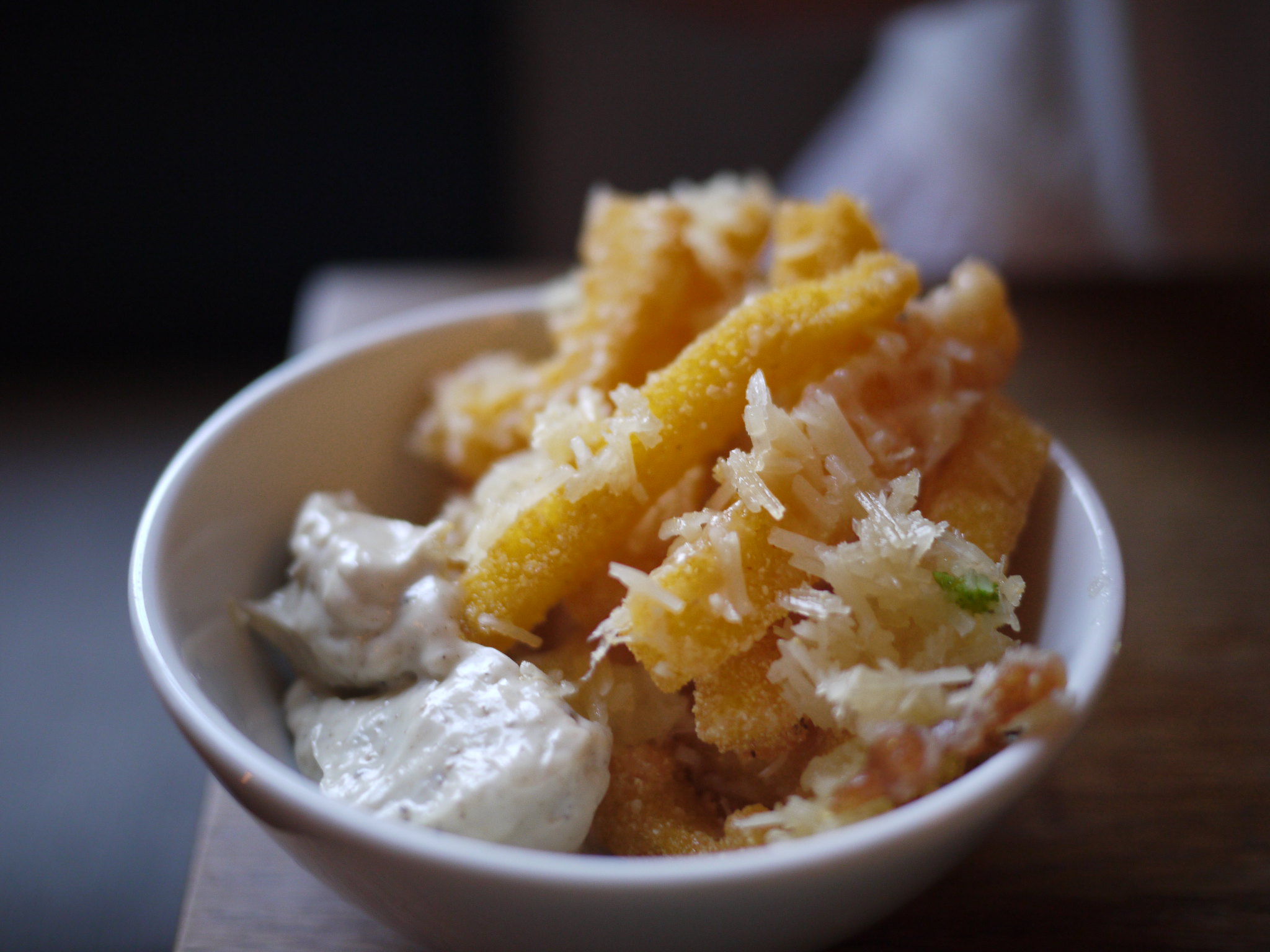
Truffle fries
Except for the few that specify “artificial truffle flavoring,” it’s practically impossible to know what’s in these products. What is known is that many high-priced, truffle oils (truffle volatiles can be captured in olive oil) are flavored with petroleum-based chemicals like 2.4-dithiapenthan. 2-methylbutanal, and bis-methylthiomethane, but nary an actual truffle. While these chemicals are found in the natural odor of truffles, they’re a stripped-down version of the fungus’s real fragrance.
The trouble doesn’t end there. Spores from Chinese truffles are infecting European soil and taking it over. But in fairness, significantly smaller crops of inferior truffles, hailing from Morocco, Tunisia, and Romania, also get marketed as something they’re not.
Not surprising, then, that many people “don’t get” what all the fuss is about — neither the endless hosannas nor the luxury prices — even after eating truffle-enhanced dishes in respectable restaurants where the knobby tuber is sometimes ceremoniously carried to the table like a crown jewel before being shaved onto a mound of pasta, an omelet, or bowl of soup.
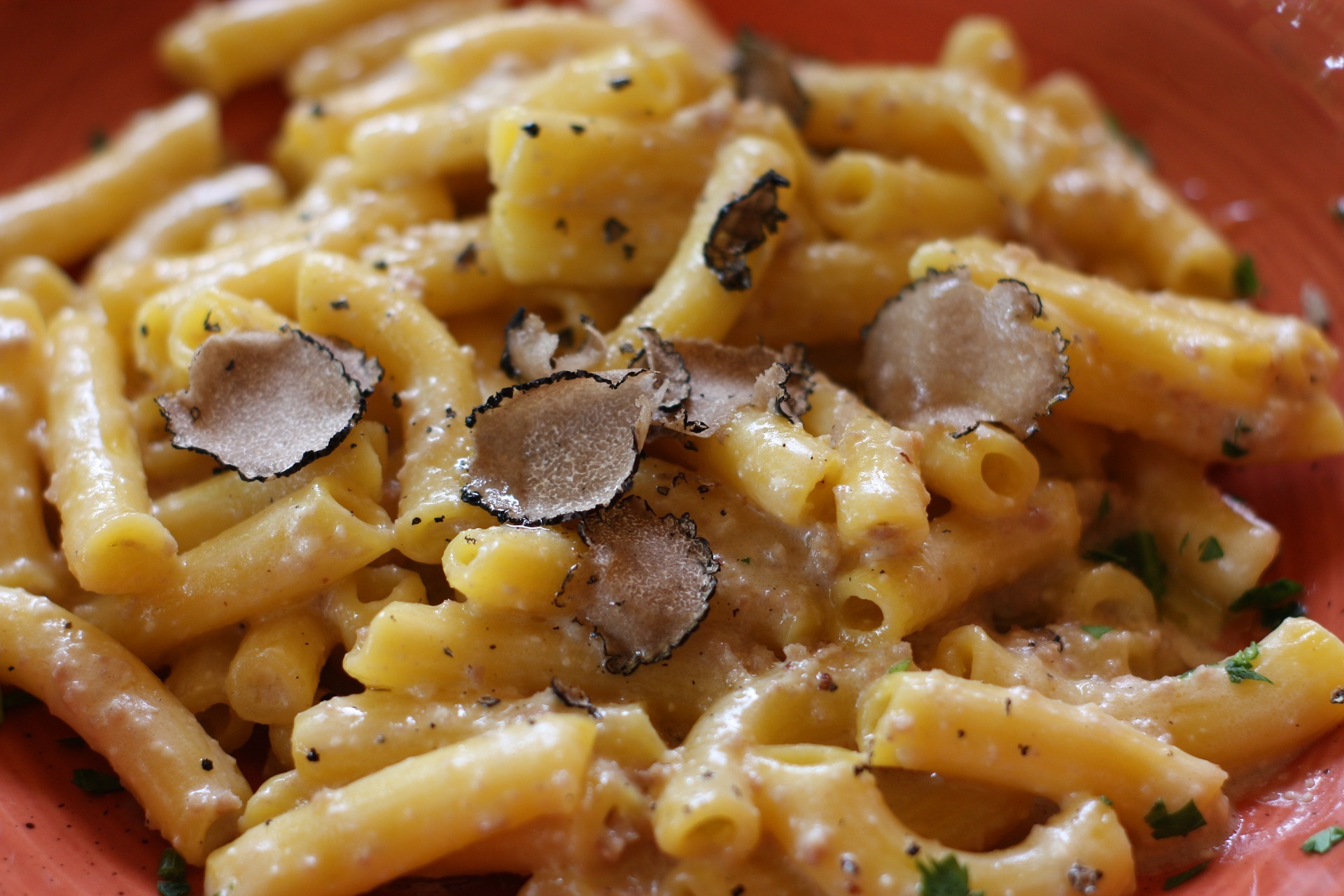
Shaved truffle in pasta
***
Black Perigords are truffle royalty, but they’re usurped in status by Alba (or Italian) Whites (a.k.a. “Truffles of the White Madonna” or tuber magnatum). This creme de la creme of the truffle kingdom contains nearly twice as much androstenol as a virile hog. The current per-pound market price in the US for fresh, commercial-quality Perigords is between $600-$900. Albas sell for two to five times as much.
During a November 2000 auction, a Tokyo-based buyer bid $6,450, via tv hookup, for a 497-gram Alba, setting a record. That same month, at another auction, a Los Angeles restauranteur paid $35,000 for an Alba weighing just over a kilo. Then, in late 2004, a consortium paid $53,000 for an 850-gram Alba from Tuscany, which was subsequently put on display in a Knightsbridge, London restaurant, where it proceeded to deteriorate. It was buried with great pomp and ceremony (pallbearers wore medieval costumes) with the hope that it would generate offspring. In 2006, at a charity auction in Italy, a 1.5-kilogram Alba sold for $160,000 to a Hong Kong buyer. In 2007, at a Tokyo charity auction, Macao casino billionaire Stanley Ho secured the winning bid of $330,000 for a 1.5-kilogram Alba.
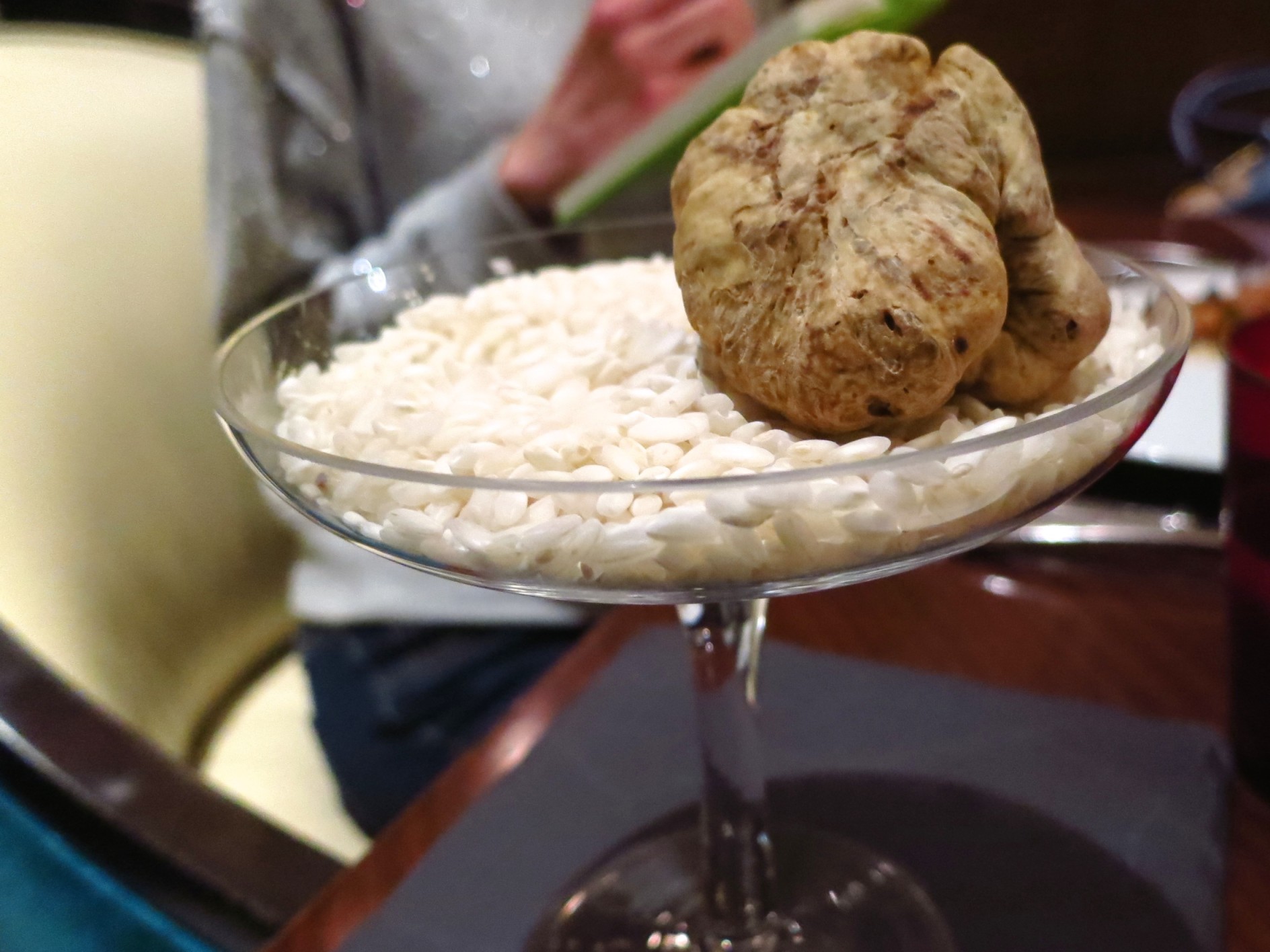
The insane prices reflect both quality and rarity. Albas are only found in a few old, intact Italian oak forests; mycologists have yet to crack the code for Alba inoculations. Both Winter and Spring Whites (“sweet, cedar-like, with hints of cinnamon, nutmeg, and vanilla”) grow wild in Oregon but they sell for far less than the local Blacks. Another version of Whites, found in Croatia are, predictably, smuggled across the Italian border and mixed in with Albas to fetch higher prices. In 2017, two brand-new species, said to be a mild version of Italy’s prized Albas, were unearthed in northern Thailand, in a national park surrounding Mount Suthep.
***
Few things in the world are as unremarkable to look at yet so highly prized.
So, what do truffles taste like?
Garlic and cheese, with subtle undertones of methane. A magnificent marriage of honey, gasoline, and pine needles. With a hot, drowsy smell that lulls the senses, yet enflames them. O’Toole believes that each individual truffle has its own scent. The Perigords she grows “have a mouth-watering, earthy, smoky, mushroomy, charcoal smell when ripe.”
The obsession began to make a bit more sense after the recent discovery that, along with androstenol and dimethyl sulfide, truffles contain anandamide, a fatty acid that triggers the release of mood-enhancing chemicals in the brain using the same biological mechanism as cannabis. Scientists sometimes refer to anandamide as “the bliss molecule.” The more mature (ripe) the truffle, the higher the level of anandamide.
The combination of mating trigger and brain bliss has a subtle, subliminal, autonomic effect on humans. Medieval clerics may have been onto something when they dubbed truffles “the Devil’s spawn.” Spanish nuns were subsequently forbidden to go anywhere near them. Or perhaps the Church fathers just wanted to keep the truffles for themselves.
